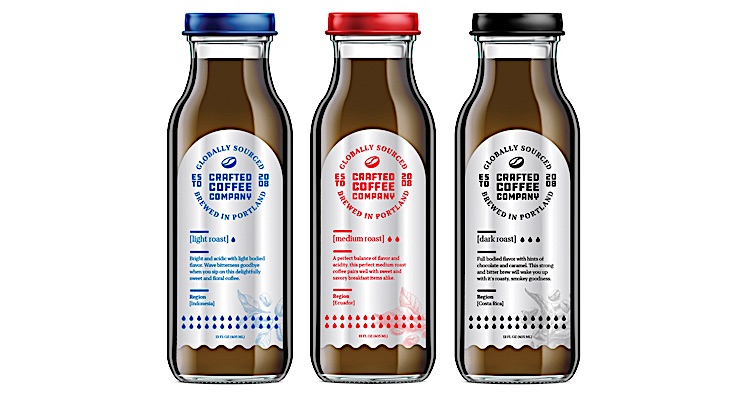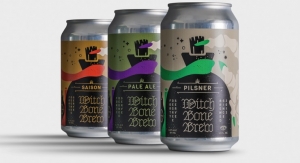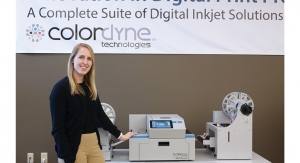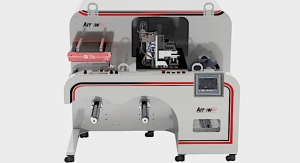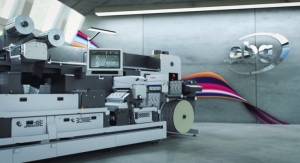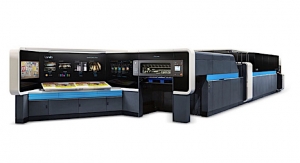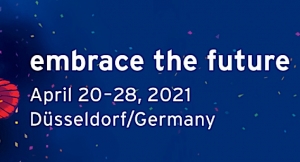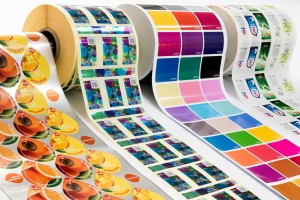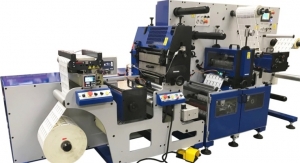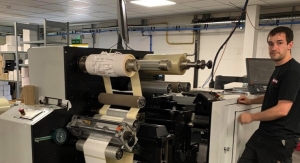Greg Hrinya07.23.20
The growth of digital and hybrid press installations has sparked the need for more versatile substrates. The image quality must be optimized for shorter and longer runs, and the materials must accommodate multiple technologies – toner and inkjet, to name a few.
According to Paul Lender, business development manager of digital materials, Avery Dennison Label and Packaging Materials, the market for digitally printed labels is growing at double digits and is estimated to account for roughly 10% of the total production label volume.
There are a host of trends impacting the digital label printing space. Toner technologies are seeing increased productivity, with wider and faster presses and an expanded application range. Toner is increasingly being utilized for flexible packaging and digital embellishments. UV inkjet has seen drop size down to 2 picoliters and image quality of 1600 x 1600 dpi. Low migration inks, designed to answer demand for food-safe packaging, have also grown in popularity.
“Digital labelstock requirements vary depending on the specific technology platform,” says Lender. “Most standard materials, with the exception of heat sensitive materials, are suitable for dry toner, while a special pre-applied or inline applied primer is required for liquid toner materials. Many standard materials work well for UV inkjet though sometimes special topcoated materials are needed to ensure optimal ink adhesion and image quality. Water-based inkjet requires highly engineered topcoats to ensure instant dry, light fastness and water, chemical resistance.
“Recently, within our Water-based Ink Jet (WBIJ) portfolio, we’ve seen a lot of interest in our new Metallized PET WBIJ facestock,” he adds. “Avery Dennison also offers film and paper materials, along with materials for the wine and spirits, durables, flexible packaging and tag stock materials.”
Avery Dennison has developed a complete range of label materials for the various technologies popular among digital converters today. Electrophotography, with liquid or dry toner, is popular among HP Indigo and Xeikon users, respectively. Meanwhile, UV inkjet, with suppliers like Domino, Durst, Screen and Mark Andy, and water-based inkjet, with Colordyne, Epson, Primera and more, requires a certain set of substrates.
“To achieve high-quality results, especially for inkjet-printed labels, it’s important to understand and optimize the complete system, which includes the printhead (number of jets, print frequency), ink (surface energy, viscosity), substrate (surface characteristics) and the software that ties it all together,” explains Lender. “It’s not uncommon to get very different results depending how these variables and settings are calibrated. This is one of the reasons why we work directly with all the key OEMs to jointly test/qualify digital portfolios to help make it easier for customers to select the right materials for success. All materials in our digital portfolios have been evaluated for performance with the OEMs.”
Avery Dennison offers a digital print lab with full testing and printing capabilities to qualify the latest digital substrates. In addition, the company can test for BS5609 for any new drum applications. Additionally, Avery Dennison’s team of experts have worked diligently to help converters looking to get started in digital.
For an in-depth look at digital substrates, click here for a feature from L&NW's July/August issue.
According to Paul Lender, business development manager of digital materials, Avery Dennison Label and Packaging Materials, the market for digitally printed labels is growing at double digits and is estimated to account for roughly 10% of the total production label volume.
There are a host of trends impacting the digital label printing space. Toner technologies are seeing increased productivity, with wider and faster presses and an expanded application range. Toner is increasingly being utilized for flexible packaging and digital embellishments. UV inkjet has seen drop size down to 2 picoliters and image quality of 1600 x 1600 dpi. Low migration inks, designed to answer demand for food-safe packaging, have also grown in popularity.
“Digital labelstock requirements vary depending on the specific technology platform,” says Lender. “Most standard materials, with the exception of heat sensitive materials, are suitable for dry toner, while a special pre-applied or inline applied primer is required for liquid toner materials. Many standard materials work well for UV inkjet though sometimes special topcoated materials are needed to ensure optimal ink adhesion and image quality. Water-based inkjet requires highly engineered topcoats to ensure instant dry, light fastness and water, chemical resistance.
“Recently, within our Water-based Ink Jet (WBIJ) portfolio, we’ve seen a lot of interest in our new Metallized PET WBIJ facestock,” he adds. “Avery Dennison also offers film and paper materials, along with materials for the wine and spirits, durables, flexible packaging and tag stock materials.”
Avery Dennison has developed a complete range of label materials for the various technologies popular among digital converters today. Electrophotography, with liquid or dry toner, is popular among HP Indigo and Xeikon users, respectively. Meanwhile, UV inkjet, with suppliers like Domino, Durst, Screen and Mark Andy, and water-based inkjet, with Colordyne, Epson, Primera and more, requires a certain set of substrates.
“To achieve high-quality results, especially for inkjet-printed labels, it’s important to understand and optimize the complete system, which includes the printhead (number of jets, print frequency), ink (surface energy, viscosity), substrate (surface characteristics) and the software that ties it all together,” explains Lender. “It’s not uncommon to get very different results depending how these variables and settings are calibrated. This is one of the reasons why we work directly with all the key OEMs to jointly test/qualify digital portfolios to help make it easier for customers to select the right materials for success. All materials in our digital portfolios have been evaluated for performance with the OEMs.”
Avery Dennison offers a digital print lab with full testing and printing capabilities to qualify the latest digital substrates. In addition, the company can test for BS5609 for any new drum applications. Additionally, Avery Dennison’s team of experts have worked diligently to help converters looking to get started in digital.
For an in-depth look at digital substrates, click here for a feature from L&NW's July/August issue.

